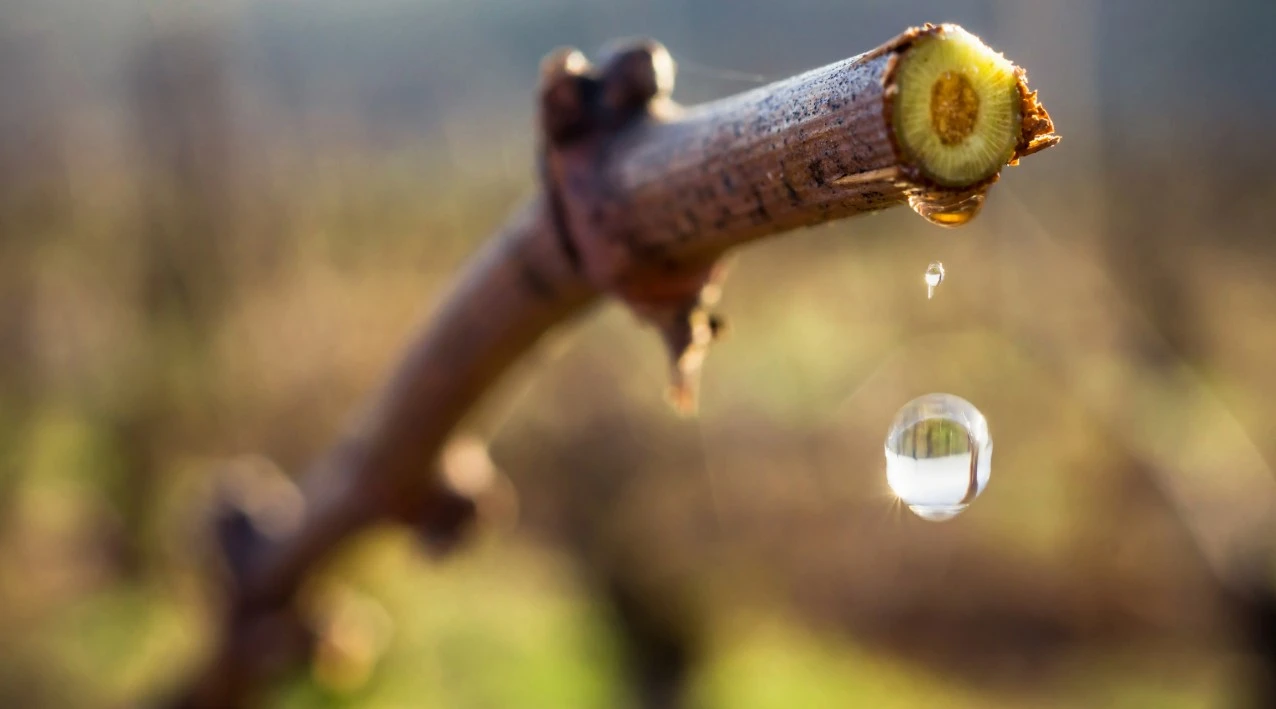Vine weeping is a phenomenon that has captured the attention of wine connoisseurs and lovers for centuries. This term refers to the release of small droplets of liquid that emanate from fresh cuts on vine trunks or branches, similar to tears, when they are pruned or injured. Known scientifically as vine exudation, it not only has aesthetic value, but also arouses scientific curiosity and offers clues about the health and vitality of the plant.
It is a natural and complex process that occurs mainly during spring and summer, when vine activity is at its peak. Although it may be more common in certain grape varieties and in specific climatic conditions, all vines are capable of displaying this phenomenon to some extent.
The main cause of vine weeping is osmotic pressure, a process in which liquid inside the plant, rich in nutrients and organic compounds, flows outward through fresh cuts. This fluid flow is vital for wound healing and protecting the plant from pathogens and diseases. Additionally, weeping can be influenced by factors such as temperature, soil humidity, grape variety and plant condition.
Although vine weeping may seem like a minor phenomenon, careful observation can provide valuable information to winegrowers. Excess exudation could indicate an imbalance in the plant, possibly caused by excessive pruning or water stress. On the other hand, an absence of crying could signal underlying health problems, such as wood diseases or nutritional deficiencies.
In the world of wine, the weeping of the vine is also linked to the notion of terroir, the concept that the environment in which the grape is grown influences the character and quality of the resulting wine. A vineyard’s unique soil, climate and topography conditions are believed to be reflected in the exudation of the vine, adding an additional layer of complexity and authenticity to the wine.
Vintners and winemakers often observe vine weeping as part of a set of indicators of plant health and vigor. Along with other signals such as vegetation growth, grape development and leaf condition, weeping provides valuable clues about the overall well-being of the vine and the potential quality of the harvest.
Beyond its practical function in viticulture, the cry of the vine symbolizes the deep connection between wine, the land and human labor, adding a layer of meaning and beauty to the world of wine.


